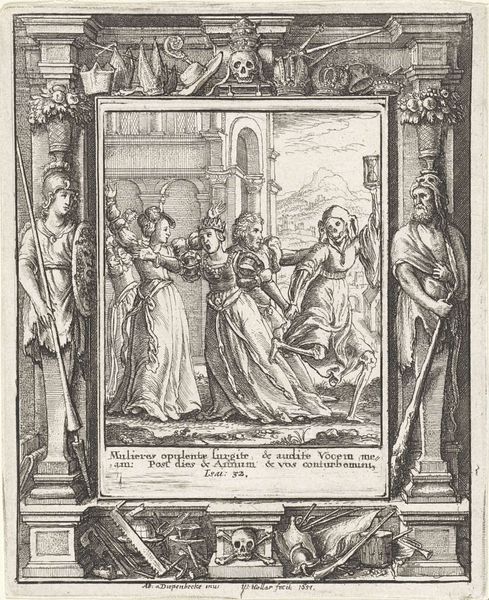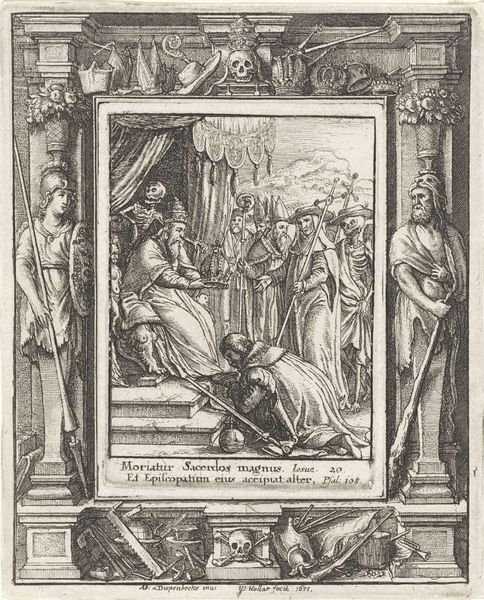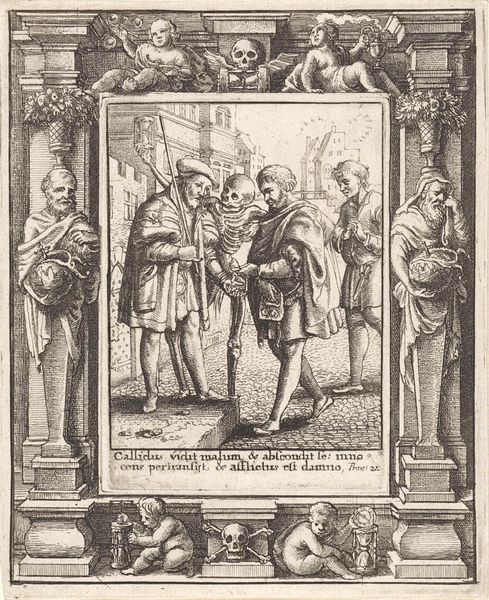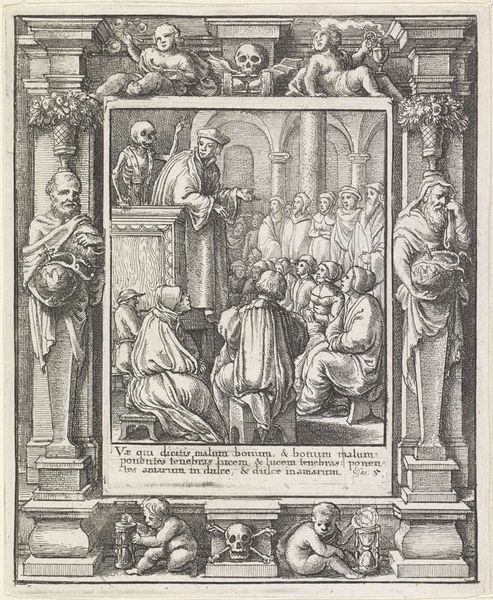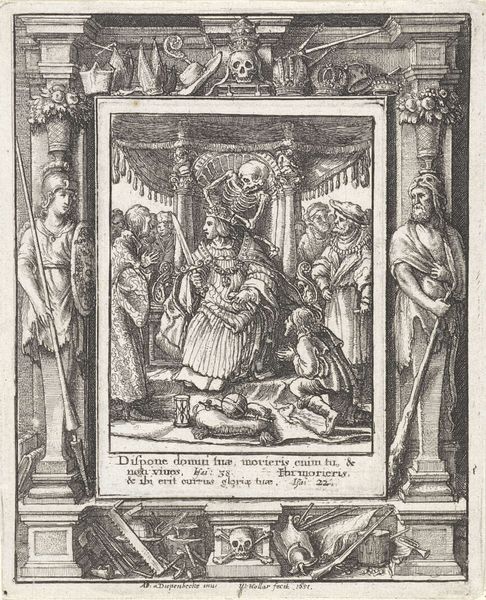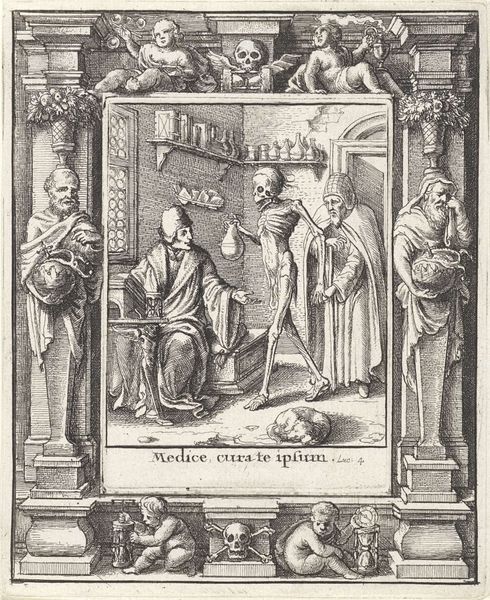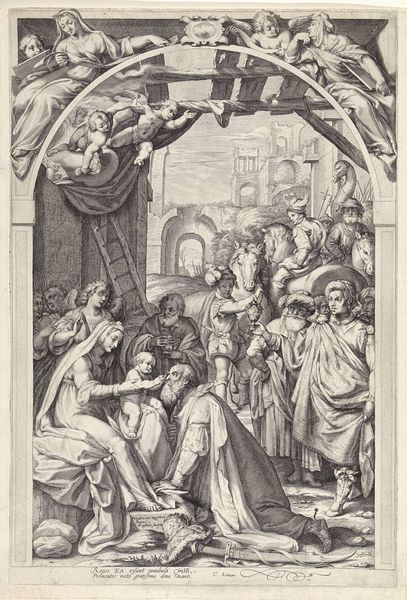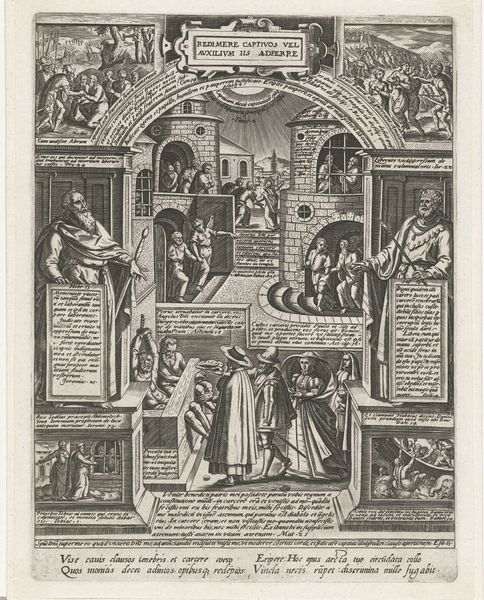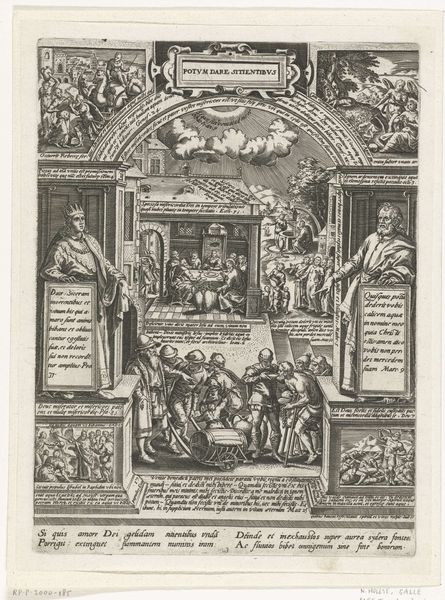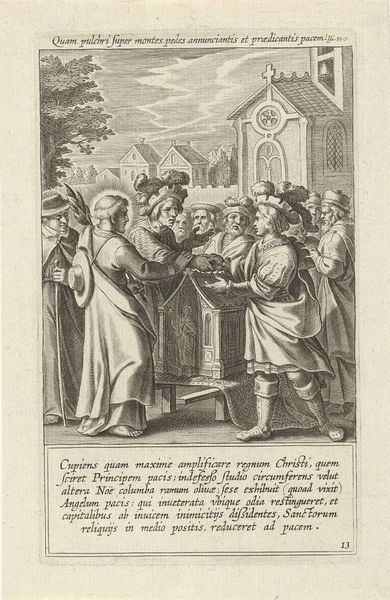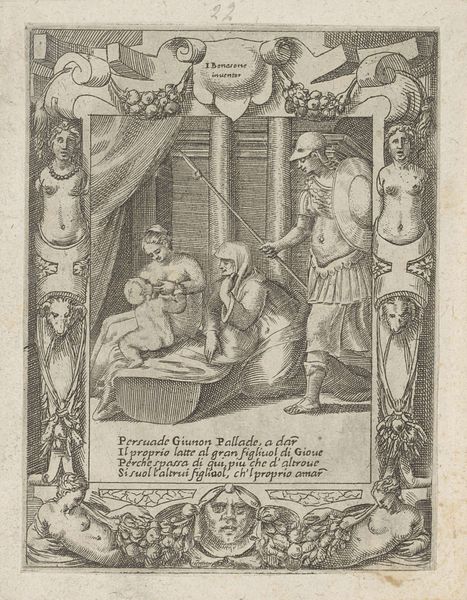
print, etching, engraving
#
narrative-art
#
baroque
#
pen drawing
# print
#
etching
#
history-painting
#
engraving
Dimensions: height 115 mm, width 95 mm, height 77 mm, width 55 mm
Copyright: Rijks Museum: Open Domain
Editor: This is "The Duke and Death," a 1651 etching by Wenceslaus Hollar, currently at the Rijksmuseum. It's incredibly detailed for its size. The mood feels…stark, like a moral lesson. What do you see in this piece? Curator: It’s a powerful depiction of social commentary masked as allegory, isn't it? Hollar situates death not as a distant event but intimately intertwined with power. Look at how the Duke is adorned, then notice Death touching him, indifferent to his status, alongside a woman begging for help, possibly alluding to socioeconomic stratification of suffering. Does that dynamic feel familiar? Editor: Definitely! The framing, too – with those martial figures and tools discarded at the base – feels like a commentary on earthly power’s futility. What about the Latin inscription? Curator: It reads "Princes shall be clothed with mourning... and I will make the pride of their power to cease.” This explicitly links the Duke's mortality with the impermanence of worldly authority, nodding to biblical judgement. Do you see parallels between the iconography of power, the symbols in the architecture, and the inevitable demise conveyed in the piece, and how they underscore the human tendency to seek out these things? Editor: Yes, the whole composition underscores that despite wealth or rank, death is the ultimate equalizer. I hadn't fully connected the biblical verse to that reading. Curator: It challenges the assumed hierarchy of life. Thinking about it through a modern lens, we might consider how different communities experience death and suffering disproportionately. How do contemporary systems of power influence who lives and who dies, and under what circumstances? Editor: That’s a sobering thought. I initially just saw it as a historical piece about mortality, but you’ve opened my eyes to its continuing relevance in today's context, highlighting how social injustice still dictates differential access to life. Curator: Precisely! It is vital to approach old work in a way that continues to shed light and make visible existing injustice through today's lens.
Comments
No comments
Be the first to comment and join the conversation on the ultimate creative platform.
